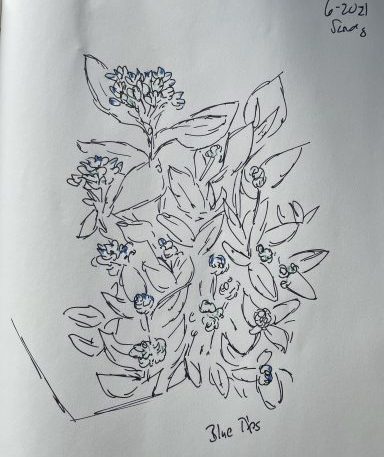Last Friday, I a 10:30 meeting that suddenly had to be rescheduled. With a few minutes of found time, I swung by Jess’s room to check in and chat.
Suddenly, she popped up from her chair, and said, “I’m going to Lynn’s room for the next conventions inquiry! You should come! Can you?”
“I’ve got a group at 11:00, so I can come for a bit.”
“It’s going to be quick continuation of yesterdays inquiry.”
“This time, they are going to write their own sentences on strips. They are going to work in partners to brainstorm a sentence with names and then write it using appropriate casing!”
Our quick hallway conversation had me prepared for what was to come.
Jess has just started reading Pattern’s of Power: Inviting Young Writers into the Conventions of Language, by Jeff Anderson. She came to school on Monday excited about the ideas and possibilities she had uncovered after reading the first few chapters.
The arrival of the book on Jess’s desk and the onset of her reading was timely. Under the guidance of Mary Ehrenworth, our school has embraced slicing student work in order to move away from scoring writing for the sake of scoring and moving towards looking at samples for what kids can do. Out of this work and many conversations across the school, we’ve begun to wonder how can we infuse our teaching of conventions throughout our days. We’ve begun to wonder how can we hold children accountable for proper casing, spacing, spelling, independent clauses with an authentic approach.
With a buzz of convention questions in the air at our school, Jess decided to take on mini inquiries in a kindergarten class and and a first grade class. With the first graders, she was inviting them to study capital letters, specifically capitalizing names.
We walked into Lynn’s room and Jess headed straight for the easel and asked the class what they had started studying yesterday. She pointed to the two sentence strips from the day before as hands went up. “Capital letters!” a few excited kids shared. “What about capital letters?” Jess pushed for clarity. “We capitalize names!” Kids shared. As I watched from the back, their was an energy, a writerly energy about capital letters!  Jess, excited her self,, said, “Today, you are going to brainstorm your own sentence with a partner and your sentence has to have a name or two. Once you’ve got your sentence, work together to write it using capital letters for names and lower case letters everywhere else!” “Are you ready?” “Yes!” Clearly, these first graders were feeding off Jess’s excitement and the focused challenge of being a writer who uses capital letters correctly – because that’s what writers do!
Jess, excited her self,, said, “Today, you are going to brainstorm your own sentence with a partner and your sentence has to have a name or two. Once you’ve got your sentence, work together to write it using capital letters for names and lower case letters everywhere else!” “Are you ready?” “Yes!” Clearly, these first graders were feeding off Jess’s excitement and the focused challenge of being a writer who uses capital letters correctly – because that’s what writers do!
I moved quickly to table where two pairs were already brainstorming. The girls  brainstormed a sentence quickly and the boys relied on a little oral rehearsal before committing to their sentence about two TV characters. Each pair talked as they wrote and I noticed they
brainstormed a sentence quickly and the boys relied on a little oral rehearsal before committing to their sentence about two TV characters. Each pair talked as they wrote and I noticed they  really attended to each letter in each word. When they had finished, I told them to read it over carefully, because writers do that, they read their writing, and check for those names and capital letters! They got a teaching point, brainstormed, read, checked, and reflected all in about 11 minutes!
really attended to each letter in each word. When they had finished, I told them to read it over carefully, because writers do that, they read their writing, and check for those names and capital letters! They got a teaching point, brainstormed, read, checked, and reflected all in about 11 minutes!
As we move towards Thanksgiving, I am thankful that I am invited into inquiries like these alongside colleagues (and friends) like Jess.
Questions like, “What happens when I do a mini inquiry on conventions with kindergarteners and first graders” (Jess’s question) or “What happens when a group of teachers reads Joy Write by Ralph Fletcher?” (my question) can, and should, honor our curiosities.
When the curriculum, our curiosities and our kids are at the heart of our teaching, I believe we can be energized and alert in our work. I have hallway conversations and invitations to thank for keeping my curiosities alive.



Miss these hallways conversations. Thank you for documenting all of the awesome work you all continue to do. I’m reading and taking these ideas!
LikeLiked by 2 people
I think I might need to read this book.
LikeLiked by 2 people
I thought about writing about this this week. I’m glad you did. It was fun to see the work from your perspective. I’d be lost without this hallway conversations and our shared research. I’m grateful too.
LikeLiked by 2 people
I love the positive energy and collaborative spirit in your slice. I’m continually considering how to infuse an understanding of the power of conventions into my fourth grade classroom (and have a ways to go!). It was fun to see this happening in first grade.
LikeLiked by 1 person
You and Jess are the colleagues I dream of. I love how you go on these adventures together. You are models of teachers as learners.
LikeLiked by 1 person